All products featured are independently chosen by us. However, SoundGuys may receive a commission on orders placed through its retail links. See our ethics statement.
Best microphones for recording
April 28, 2025




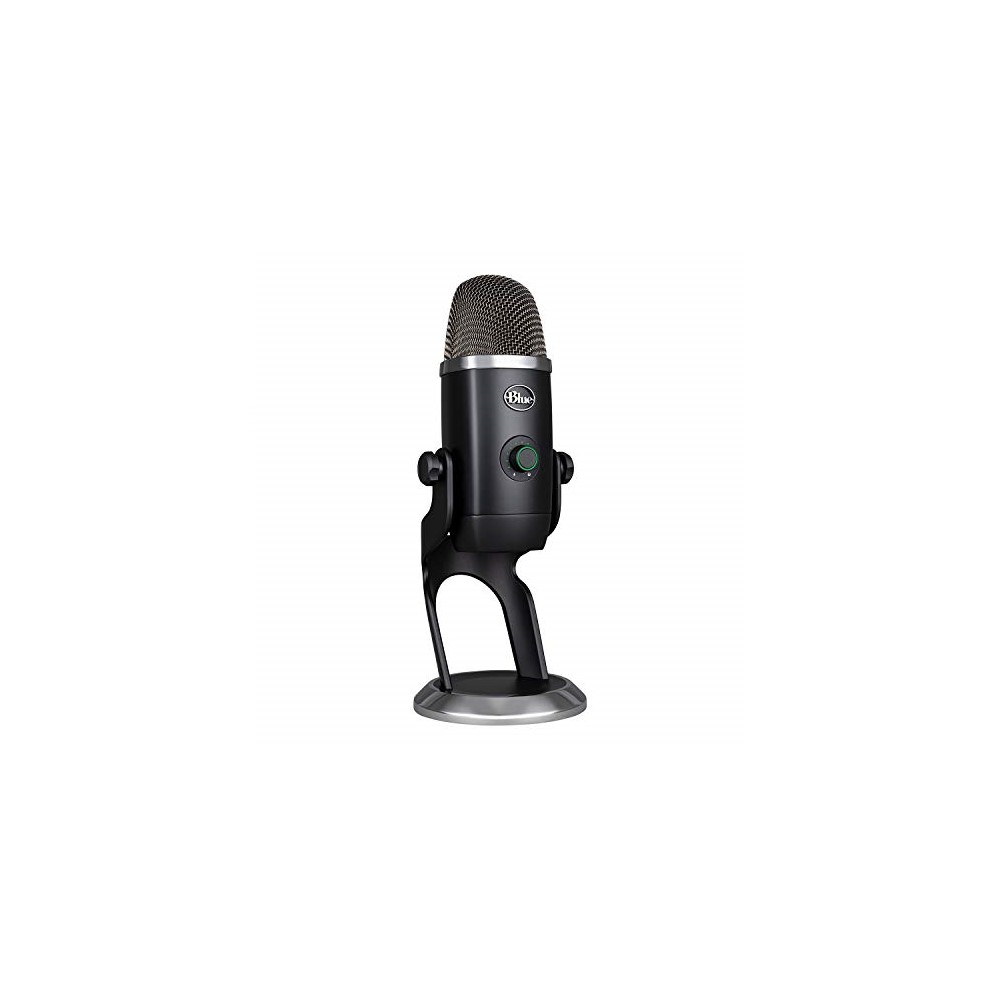



If you’re just starting to dip your toe in the world of recording audio, or if you’re getting ready to build a full home studio, you need to make sure you invest in the proper microphone. In this list, we cover the best microphones for recording — be it instruments, vocals, or YouTube videos.
Editor’s note: this list of the best microphones for recording was updated on Aprile 28, 2025, to , to update Rode NT1 to mention 5th generation, and to update formatting.
The best microphone for recording is the Shure MV7
If you’re looking for a mic that can perform equally well recording vocals for your next song and the voiceover for your next Twitch stream, the Shure MV7 is a great little mic. It has a USB and XLR connection so you can choose what’s best for your particular use case. The ShurePlus MOTIV app is also easy to use and very helpful for your daily recording needs.
This durable, dynamic mic produces crystal clear sound no matter your use case, as you can choose from a plethora of frequency responses in the companion app. The Shure MV7 records in a cardioid polar pattern and houses an internal shock mount. When you purchase the MV7, you get an included windscreen, which helps mitigate the plosives and fricatives of speech.
The best recording microphone has a sturdy, all-metal build—and it should, considering the cost. Though you won’t need additional accessories if you’re using its USB output, you’ll want to pick up a preamp or interface to use the XLR output to record directly to your computer. If cost is an issue for you and you don’t need multiple pickup patterns, the Shure MV7X offers similar specs but leaves out the extra frills for a much cheaper price ($179 at Amazon).
Shure MV7 microphone demo (Flat):
Shure MV7 microphone demo (Natural):

The best recording microphone for instruments is the Shure SM57
If you’ve ever been in a recording studio, it was probably chock-full of Shure SM57 mics. This little dynamic microphone is ideal for loud instruments, such as electric guitars and drums, whether you’re miking a live performance or recording.
The mic’s capsule is very small, which makes it easy to fit in the crevices of a drum kit or to point right at the driver of your bass guitar amp. You will want to maintain a few inches of distance, though, so as to avoid the proximity effect. The SM57 can handle loud sounds without distortion kicking in, and it has a slight presence boost, highlighting instrumental resonances. Its sub-bass attenuation will ensure that the thud of your kick drum doesn’t overpower other resonant frequencies.
The best recording microphone for instruments has a durable metal build, and comes with a swivel stand adapter for easy placement as well as a zip carrying bag. Shure products have unique Pneumatic shock mounts, which are internal devices that help reduce handling noise. The cardioid polar pattern also means that the mic is good at rejecting off-axis sound. The SM57 is a dynamic mic with an XLR connection, so you won’t need phantom power, but you will need a USB interface for recording into your computer. Anyone miking all of the drums in a drum kit individually will need a USB interface with several ports so you can plug all of the mics in.
Shure SM57 acoustic guitar sample:
Though you certainly can use the Shure SM57 for recording acoustic guitars in a pinch, keep in mind that condenser microphones are better at picking up the subtle details of acoustic guitars. The SM57 is better suited for miking guitar amps or other louder instruments. You shouldn’t use the SM57 for recording vocals because it doesn’t have any sort of internal pop filter, so you might end up with plosives and fricatives (P and F sounds) in your recording. If you like Shure and are recording vocals, go for the Shure SM58.


The Rode NT1 5th generation is the best microphone for recording vocals
If singing is your main game, you should definitely check out the Rode NT1. This microphone has a neutral-leaning frequency response, so it’ll reproduce your vocal sound almost exactly how live listeners hear you. However, this means you need to have skills in the mixing department if you want to give your voice any effects in post-processing (e.g., low-pass filter or treble boost). Another notable thing about the Rode NT1 is its low self-noise, so you don’t need to worry about any electrostatic noises in your recording. This is due in part to its internal shock mount.
The Rode NT1 is a condenser microphone that takes +24V or +48V phantom power, and it has a cardioid polar pattern. The best microphone for recording vocals has an all-metal build and comes with an attachable shock mount and pop filter. The 5th generation of the mic has an XLR input and a USB interface for recording into your computer. We don’t have a review of the 5th generation yet, in some research online, they sound similar to the 4th generation, which we have mic samples below. We will update this once we can get mic samples for the 5th generation.
Rode NT1 speaking sample:
Rode NT1 singing sample:
Rode NT1 acoustic guitar sample:
The Rode NT1 also sounds great with the acoustic guitar. Its sensitivity allows it to pick up the subtleties of the instrument.

The Rode NT1-A ($199 at Amazon) is very similar to the NT1, the main difference being that the NT1-A has a slightly less-neutral frequency response. Some may refer to this sound signature as “colored,” meaning that it subtly amplifies treble frequencies to highlight vocals and instrumental detail. Whether the sound of the NT1 or the NT1-A is better is really a matter of preference.
Here’s an episode of the SoundGuys podcast, which was recorded using the Rode NT1-A:
YouTubers should get the Blue Yeti X
The Blue Yeti X is a durable USB condenser microphone, which means you can just plug it into your computer for easy voiceovers. While any serious mixer will tell you that USB mics aren’t as good of quality as XLR mics, the Yeti X is one of the best USB mics out there. One reason this is the best recording microphone for YouTube is that the USB connection prevents you from needing to invest in an interface or preamp, and you can save that money by investing in a good video camera.
The Yeti X comes attached to its desktop stand and it makes for an easy and attractive mic to have in your videos. You may want to invest in an external pop filter or windscreen though. This all-metal mic has four polar patterns, including cardioid, omnidirectional, bi-directional, and stereo, making it extremely versatile. The Blue Yeti X isn’t great for recording instruments just because it’s bulky and hard to position.
The Blue Yeti X has a lot of fun features, including customizable LED lights, LED metering that tells you when you are peaking (being too loud), an adjustable gain knob to fix peaking issues, and if you have a Windows PC, VO!CE recording software with built-in vocal effects. If you want to have a sports announcer sound for a segment in your YouTube video, for example, this software will do that for you. Unfortunately, it is not available for macOS.
Get the Yeti X for a plug-and-play, hassle-free experience.
If you’re wondering about how the Blue Yeti X compares to the older Blue Yeti model, the Yeti X has a higher bit rate, so you’re afforded more wiggle room for edits in post-production. Additionally, the Yeti X has more features than the Yeti, such as LED metering and the VO!CE recording software, thus making it more expensive.


The Shure SM58 is cheap and versatile
I know what you’re thinking: Three Shure mics in one list? Yeah. They’re awesome. While the Shure SM58 may not be advertised primarily as a recording microphone, it’s a great mic for live and studio settings. Its frequency response is designed to limit the proximity effect by attenuating bass frequencies. So, one of the few things you shouldn’t use the SM58 for is recording bass guitar or kick drums because they will be de-emphasized.
The Shure SM58 has a Pneumatic shock mount that limits handling noise, and its cardioid pickup pattern makes it great for recording vocals and rejecting off-axis sound. Additionally, its bulbous capsule acts as a pop filter, but you may want to install an external one anyways to further limit plosives and fricatives.
Shure SM58 speaking sample:
Shure SM58 singing sample:
Shure SM58 acoustic guitar sample:
Shure SM58 electric guitar with amp sample:
Because the SM58 is dynamic, it doesn’t require phantom power and can handle loud outputs before distorting audio. It has an XLR input, so you’ll need an interface to adapt it for recording into your computer. This all-metal and durable mic is definitely one you’ll want in your mic closet.


The Sennheiser Profile USB microphone works for podcasters and streamers
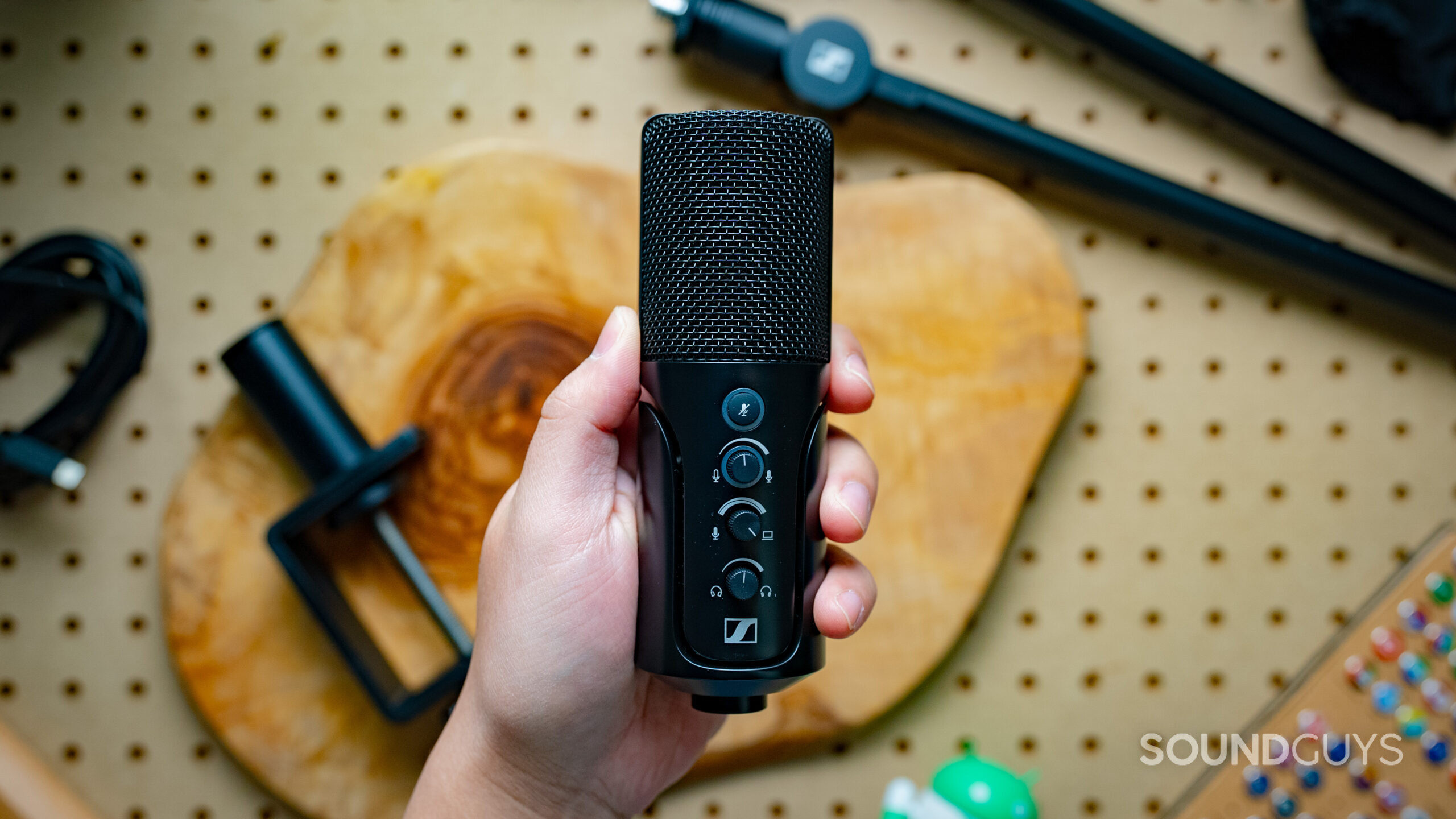
Skip the audio interface and plug the Sennheiser Profile USB microphone directly into your PC. If you’re willing to pay the Sennheiser price (which is a bit high relative to the competition), you get a cardioid polarity pattern and directly accessible controls on the mic. Having hardware controls is a double-edged sword in that if you are recording and don’t have the hardware to adjust volume and other settings, it’s nice that the Profile USB mic has those. The downside is that if you’re adjusting controls on the fly, the mic will definitely capture handling sounds. However, if you set your controls before beginning your recording, it should all go fine.

Try the Audio-Technica AT2020USB-XP for noise reduction
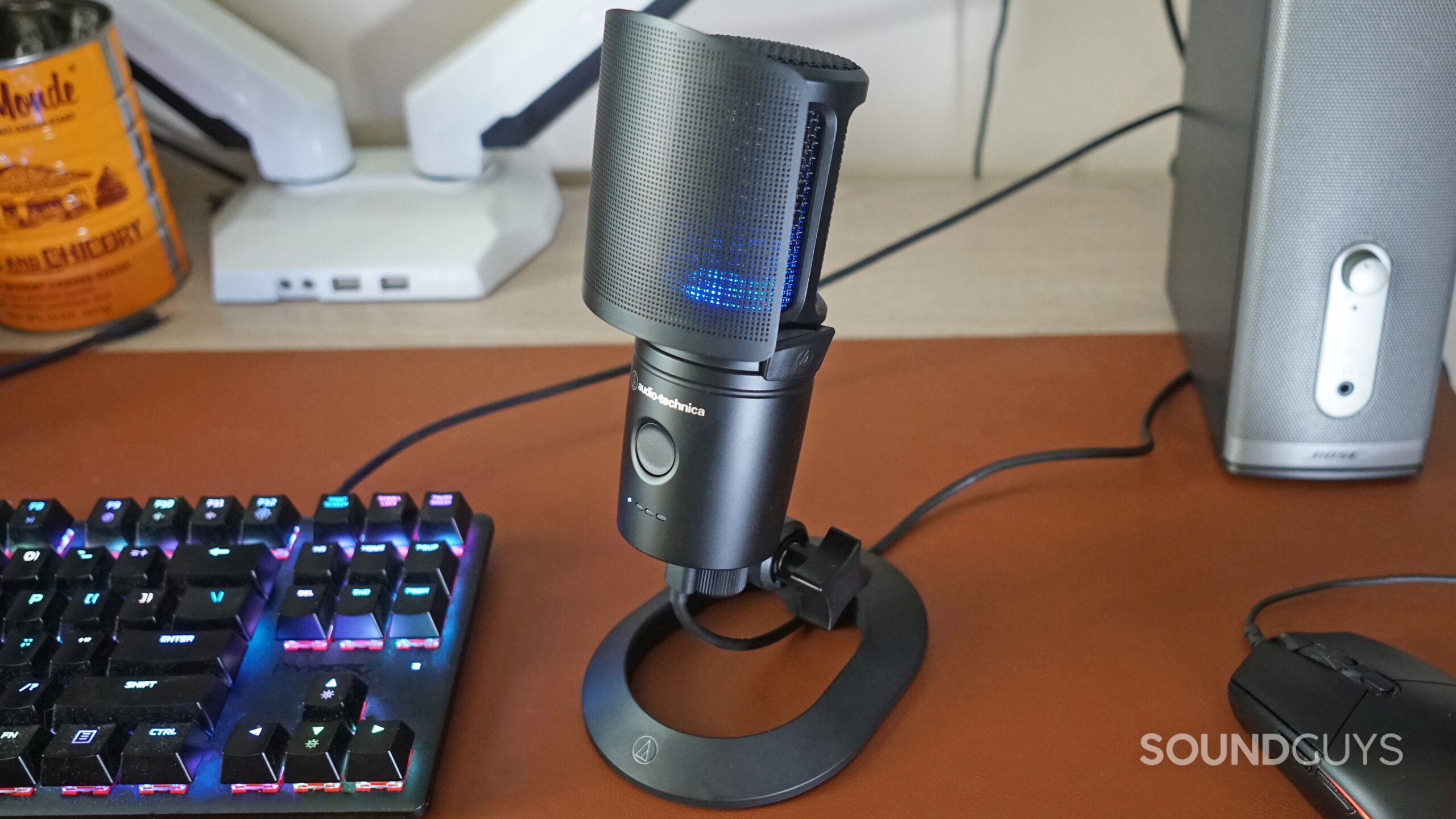
The standard Audio-Technica AT2020 ($99 at Amazon) is still a good choice with an XLR connection. Packed with a few more goodies, the Audio-Technica AT2020USB-XP uses a USB-C to USB-A connection for recording the cardioid condense mic directly to your computer. It records 24-bit/192kHz, which is a good quality for editing purposes. The mic has an optional automatic gain control and noise reduction to make your life easier, and it comes with a pop filter and a stand.

The best microphones for recording: Notable Mentions
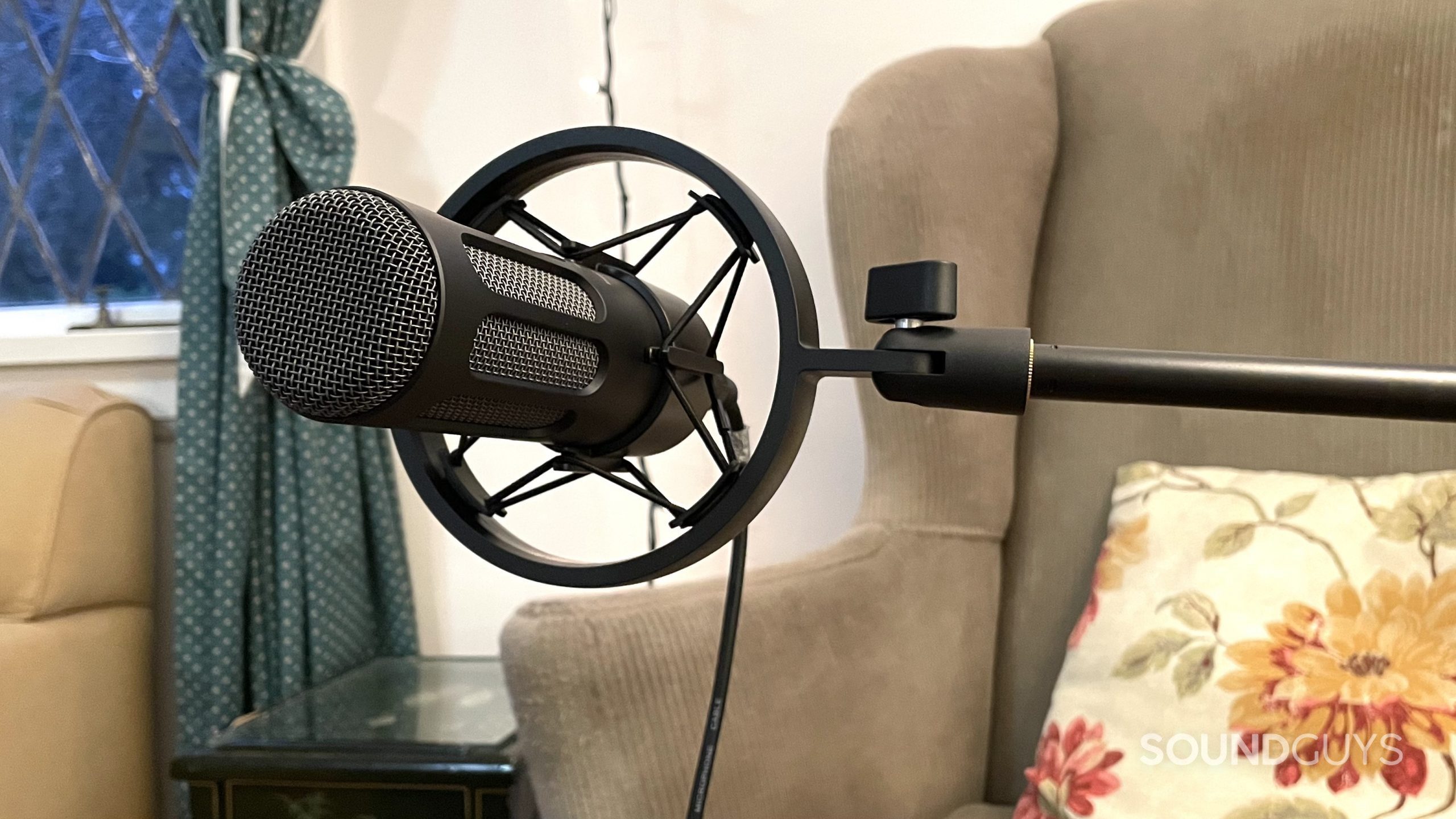
- AKG D112 MKII: If you’re miking a drum kit, you’ll need a designated kick drum mic. This cardioid bass drum mic has embedded technology that mitigates self-noise, and its dynamic nature means it can withstand a lot of volume for $27.99 at Amazon.
- AKG C214: This mic is great with a built-in 20dB pad, built for vocals and good as drum overheads. It’s pretty professional for an enthusiast price ($11.99 at Amazon).
- Beyerdynamic M70 PRO X: This dynamic broadcast microphone has a hefty price ($229 at Amazon) but excellent sound quality for recording the voice. Due to its dynamic nature, it’s also great for recording things like guitar amps because it can handle loud inputs of sound without distorting.
- Electro-Voice RE20: This dynamic microphone is another industry standard for radio broadcasting, and it is designed to accentuate the human voice to make sure you sound crystal clear, whether you’re speaking, singing, or rapping for $449 at Amazon.
- HyperX Quadcast S: Gamers and podcasters alike should opt for the Hyper X Quadcast S. This mic has an onboard gain knob and a mute button, and it displays a colorful light show to light up the room. Its audio quality is exceptional for a USB microphone, and it has an internal pop filter for $122.99 at Best Buy.
- Movo UM700: If there ever was a budget Blue Yeti X killer, it’s the Movo UM700. This USB microphone has four polar patterns, gain and volume knobs, and incredible sound quality. For a USB mic under $100 it’s hard to beat ($79 at Amazon).
- Shure SM7b: Famously used in both recording studios and radio stations across the world, the Shure SM7b reproduces vocals extremely well for $399 at Amazon. It’s also built very well so its cost won’t be paid in vain. The SM7b is a dynamic microphone and it very effectively rejects off-axis sound.
What you should know about the best recording microphones
What is frequency response?
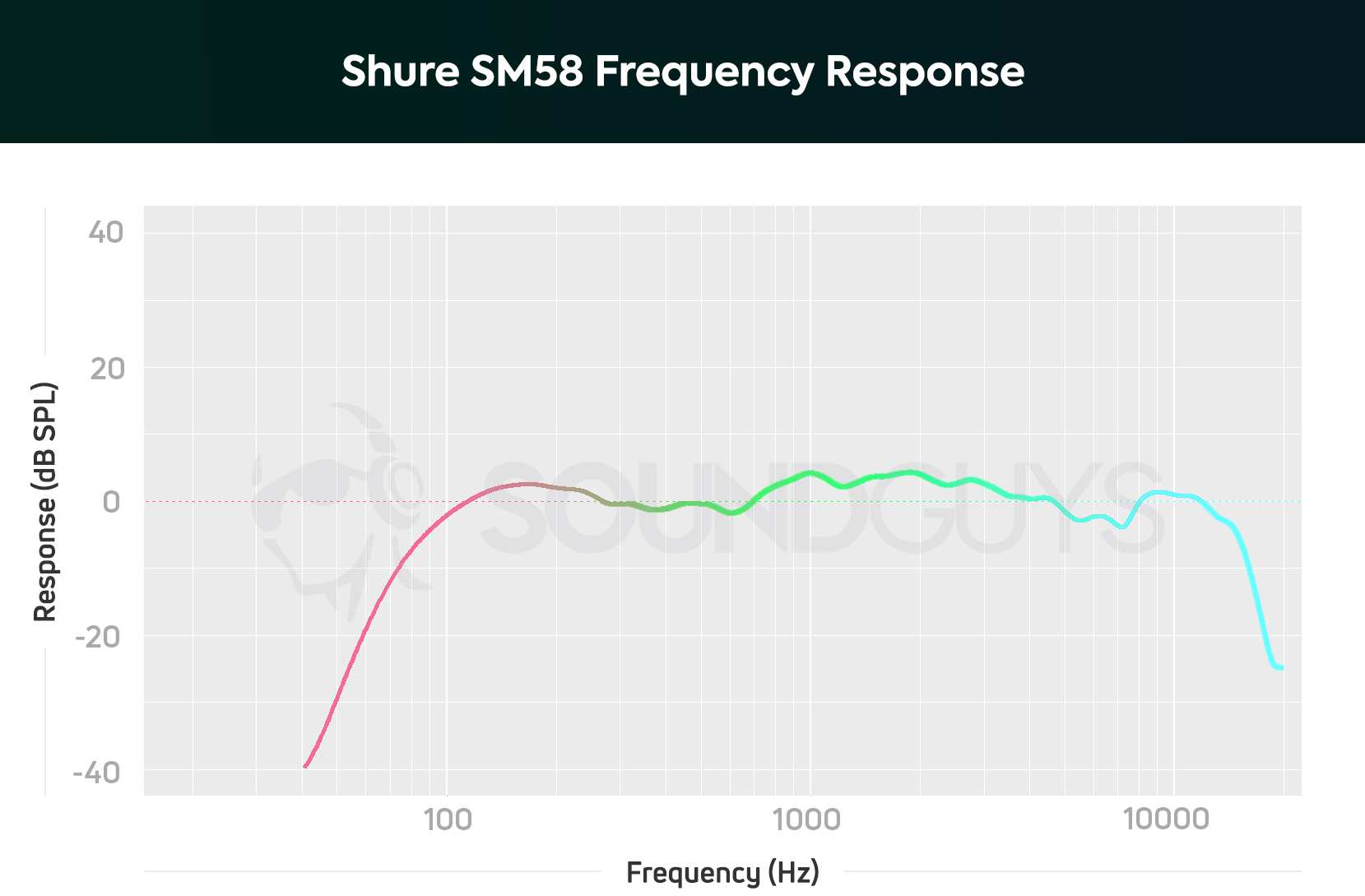
A microphone’s frequency response refers to the range of frequencies that the microphone receives and transmits. A frequency response chart illustrates the particular frequencies that the microphone emphasizes and those that it attenuates. When looking for a microphone, you want a frequency response that is relatively “flat,” because that means the microphone will accurately record audio. However, sometimes a slight treble boost is beneficial for vocals or instruments because it amplifies the harmonic content of these sounds. Additionally, bass attenuation can be beneficial to reduce low-end distortion.
There are key differences between condenser and dynamic mics
A condenser microphone is more sensitive to sound and, therefore, typically better for picking up subtleties in studio settings. However, its sensitivity also means it is not ideal for loud sounds such as drums because it is prone to distortion. Additionally, condenser microphones require phantom power, which can be achieved with an interface or preamp.
Dynamic microphones, on the other hand, are much less sensitive, so they can handle loud sounds without distortion. This often makes dynamic microphones ideal for live performances, but they are also great for studio recordings of loud instruments like drums or bass guitars. Dynamic mics are also good at rejecting off-axis noise, so if you’re worried about picking up room noise in your recording, a dynamic microphone will reduce that problem. Another plus: dynamic mics don’t require phantom power, so you save quite a bit of money there.
What is a polar pickup pattern?
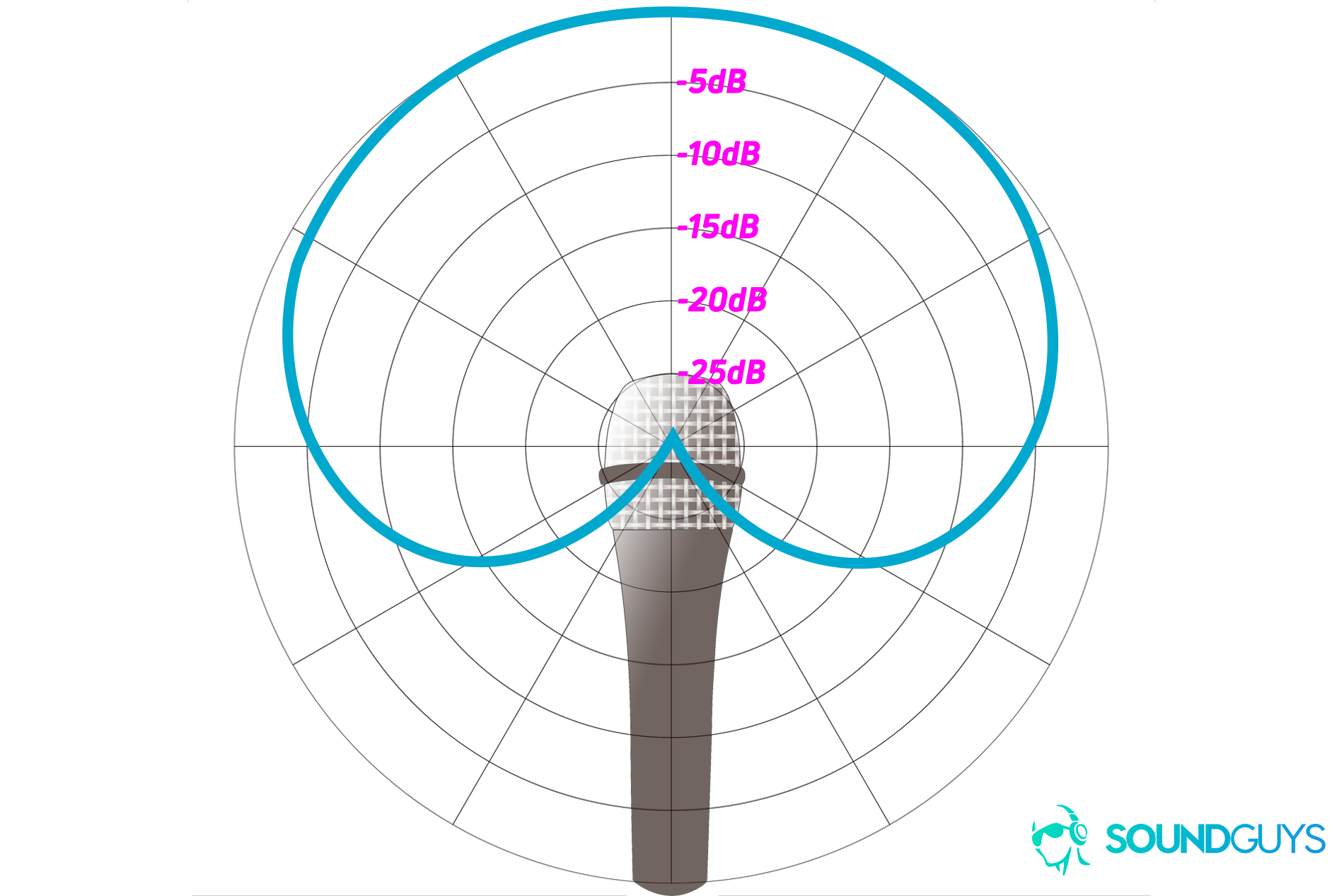
A polar pickup pattern is the shape around the microphone’s capsule in which it records audio. Depending on the use you have in mind for your mic, you’ll want to look for a different pickup pattern.
A cardioid pickup pattern records sound from directly in front of the mic and slightly to the side. This is a good pattern for vocals or close-miking instruments. A bi-directional polar pattern records audio from its direct front and direct back. This is a good pattern for recording something like a lecture, where you need to hear the speaker as well as questions from the audience. An omnidirectional polar pattern picks up sound from all around its capsule, and this mic is a good choice if you’re making full-room recordings. There are also hypercardioid and supercardioid mics; these are similar to cardioid mics and are exceptional at rejecting off-axis sound, making them useful for recording things like television show dialogue.
Why you should trust SoundGuys on the best recording mics
Each writer at SoundGuys has accumulated years of experience reporting on the consumer audio market, and our staff adheres to a strict ethics policy. We don’t use sponsored content on the website at a time when doing so is the norm. SoundGuys’ survival depends almost exclusively on readers enjoying their purchases. Additionally, SoundGuys’ survival depends solely on readers enjoying their purchases because if a customer returns their product, we don’t get a payout. We pride ourselves on transparently outlining objective facts while accounting for the subjective experience to contextualize an audio product’s performance. When we do misspeak, we correct and own up to it.
Frequently asked questions about the microphones
Lucky for you, we have a whole article on this exact subject. To summarize, you’ll need multiple microphones, cables, a USB interface, soundproofing, studio headphones, and a DAW. If you’re planning to mix the music yourself, you’ll also want a pair of studio monitors.
If you are planning to use your microphone to record audio on the go, a digital voice recorder will help your production to be a lot more portable. Some digital voice recorders double as audio interfaces and allow for recording from an XLR mic into your computer via USB input. However, if you are only planning on recording in the studio or at home, you should invest in a designated audio interface rather than a digital voice recorder. Some cheaper voice recorders don’t have the option to attach an external microphone, so make sure you look for input options when selecting a digital voice recorder.
Thank you for being part of our community. Read our Comment Policy before posting.